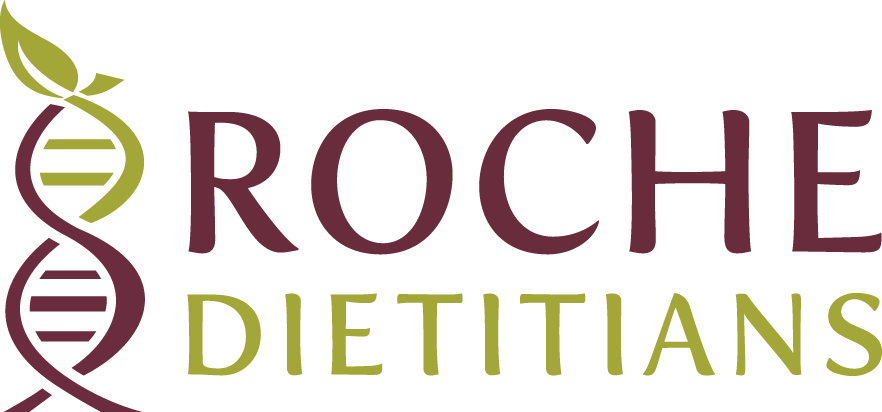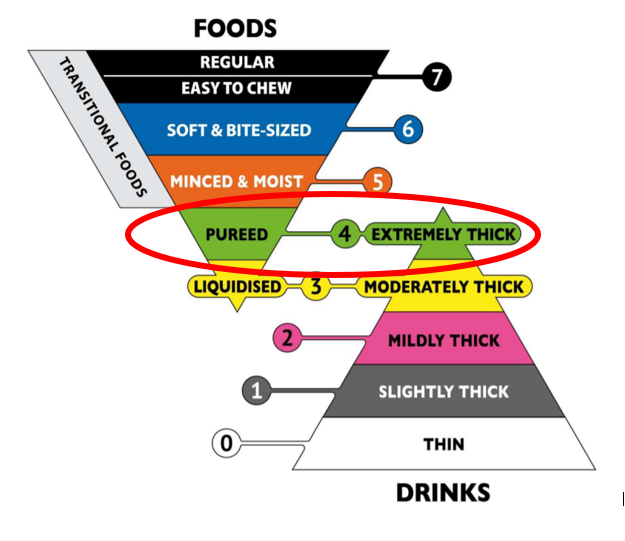Guide to IDDSI Minced & Moist (Level 5)
Chances are that the foodservice departments at other facilities don’t define the term “mechanical soft” in the same way you do. Without a standard definition, there is confusion, especially when receiving diet orders from other healthcare facilities. This puts individuals with dysphagia at a higher risk for choking.
The International Dysphagia Diet Standardization Initiative (IDDSI) Committee developed guidelines for serving texture modified foods and thickened liquids to individuals with dysphagia around the world. (Yes, around the world!) The initiative challenges us to prioritize safety and prevent the risk of choking, giving us a solution to the outdated, ambiguous language like “soft”, “chopped”, and “nectar-thick” that vary between every facility.
In order to eliminate confusion and promote patient safety, the new IDDSI standards establish unified principles for all foodservice operations to follow:
Consistent diet terminology
Standardized definitions of the diet
Simple, reliable testing methods
READ MORE: Your Ultimate Guide to IDDSI
Let’s start with the basics.
The Basics of IDDSI Minced & Moist (Level 5)
The IDDSI Framework consists of eight levels (Level 0-7), ranging from Thin Liquids (Level 0) to Regular (Level 7) texture foods. Each level has a unique name, color, and number in order to limit errors in prescribing, identifying, preparing, and assembling dysphagia diet orders.
In the graphic below, you can see where IDDSI Minced & Moist (Level 5) is located within the IDDSI Framework.
This level is represented by the number 5 and the color orange. As with all other IDDSI food levels, it is shown within the downwards pointing triangle, while all IDDSI drink levels are represented with an upwards pointing triangle.
The abbreviation for the IDDSI Minced & Moist (Level 5) is MM5. Your foodservice operation might use the MM5 abbreviation in many places, such as diet order communications, tray/service tickets, and in dining menu software or electronic health records.
Who IDDSI Minced & Moist (Level 5) is for
Individuals who are served IDDSI Minced & Moist (Level 5) have a swallowing disorder called dysphagia. This means they cannot safely chew or swallow so the food we serve must be small, soft, and moist to minimize their risk of choking.
At this level, individuals have minimal chewing abilities and enough tongue force to move a bolus of food in their mouth. The tongue force alone can be used to separate small, soft particles in this texture. However, they will experience the following problems and/or limitations:
Cannot safely chew pieces of food that are larger than “minced-sized”
Cannot break foods into smaller pieces safe enough for swallowing
Pain or fatigue on chewing
For these reasons, IDDSI Minced & Moist (Level 5) foods are prepared to be soft, small, and moist.
Characteristics of IDDSI Minced & Moist (Level 5)
We’re used to thinking about food in terms of appearance, taste, smell, and temperature. IDDSI now introduces us to new and more specific characteristics like particle size, moisture, stickiness, and softness.
Thanks to IDDSI’s unified standards, foods on IDDSI Minced & Moist (Level 5) will maintain the same characteristics no matter where in the world minced and moist foods are served. These foods should mimic the characteristics of a chewed bolus and have the following characteristics:
Soft and moist throughout
Can be scooped or shaped on a plate
Not sticky
No separate thin liquids (i.e., sauces/juices do not leak or drip from food)
Requires minimal chewing; biting is not required
Minced-sized pieces of food: No larger than 4mm in width and 15mm in length (adults); no larger than 2mm in width and 8mm in length (children
Small lumps may be visible can be easily mashed with the tongue
Food can be easily mashed with small amount of pressure from a fork
Can be eaten with a fork or spoon
Can be scooped onto a fork without liquid dripping or crumbles falling off
Want to learn more about each IDDSI Level? See our post on IDDSI Soft & Bite-Sized (Level 6)
Testing methods for IDDSI Minced & Moist (Level 5)
Testing is a new concept that shifts the way we do things in the kitchen. We know it’s not easy to make changes and get everyone on board but testing is worth it because it’s all about safety.
IDDSI Minced & Moist (Level 5) testing requires only a fork, spoon, and straightforward observation. Once it becomes part of our regular practice, it will only take a few extra seconds.
At this level, we’re concerned about particle size, moisture, softness, and stickiness. Therefore, foods must pass the following IDDSI tests:
Appearance: Check the particle size of a food sample using the tines of a fork. As a reference, the space between the tines of a fork measures about 4mm, while the length of four tines is about 15mm. For adults, minced food pieces are less than 4mm wide and 15mm long. For children, minced foods are half that -- less than 2mm wide and 8mm long. There should be no separate think liquids.
Fork Pressure Test: When pressed with a fork, food particles can be easily separated and come through the tines of a fork. It can be easily mashed with a little pressure from a fork and the pressure should not make the thumb nail blanch white.
Spoon Tilt Test: Food is cohesive enough to hold its shape on a spoon. It can slide off easily when you tilt or gently flick the spoon with very little food left on the spoon. It may leave some residue, but it should not be sticky. A scooped mound may spread/slump very slightly on the plate.
Testing is done during preparation and again at the time of service. It should be done under the same conditions we intend to serve our food, especially temperature. Remember, temperature and holding time will affect the consistency of food.
READ MORE: The five key components you need to train food service workers on IDDSI
Learning more about IDDSI Minced & Moist (Level 5)
IDDSI is an important tool in making sure that the food we serve is safe for individuals with chewing and swallowing problems. It’s vital that you and your team are well-versed in understanding IDDSI.
However, IDDSI can be complex to learn. That’s why we created the Roche Dietitians “We Test for Safety” IDDSI Training Program. This online, on-demand program will train your team on the new IDDSI standards in a straightforward, easy-to-understand way. From providing an overview of IDDSI with our Introduction Course to more comprehensive courses on each IDDSI level, including the IDDSI Minced & Moist (Level 5), your team will learn everything they need to know about the new IDDSI standards.
And the Roche Dietitians “We Test for Safety” IDDSI Training Program is not just about teaching your team about IDDSI — it empowers you to develop a culture of safety in your organization. Through this training, you will build a sustainable IDDSI culture where everyone knows their role in keeping your residents safe.




